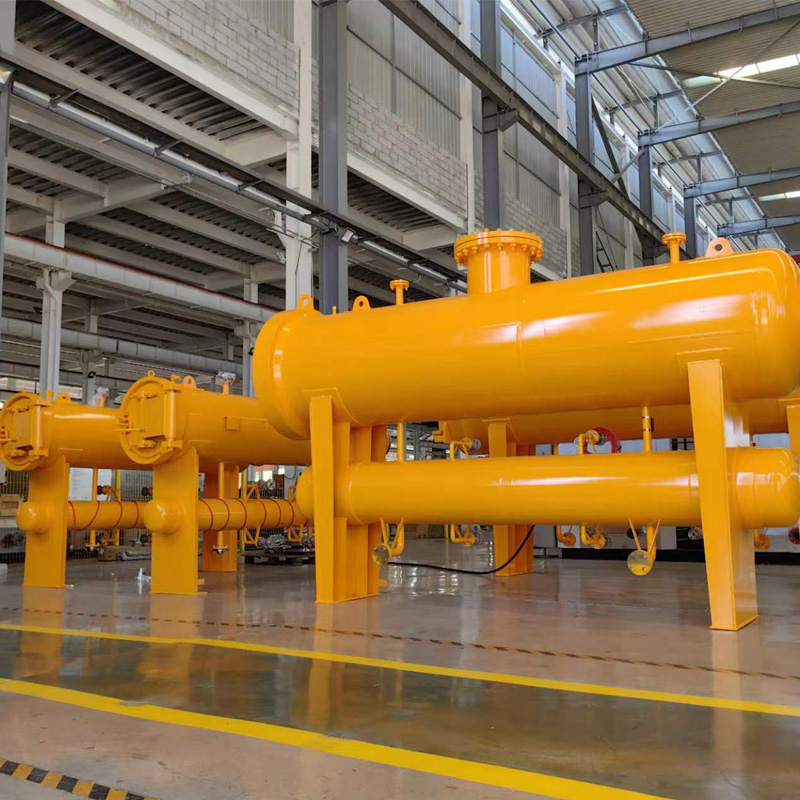
9 月 . 26, 2024 04:07
Back to list
heat exchanger
Understanding Heat Exchangers Principles and Applications
Heat exchangers are vital components in various industries, facilitating the transfer of heat from one medium to another. They are essential in ensuring energy efficiency and optimizing thermal processes in applications ranging from power plants to refrigeration systems. This article explores the principles of heat exchangers, their types, and their significance across different fields.
What is a Heat Exchanger?
At its core, a heat exchanger is a device designed to transfer heat between two or more fluids without mixing them. The fluids can be liquids or gases and often have different temperatures. By allowing heat to flow from the hotter fluid to the cooler one, heat exchangers improve energy efficiency and reduce the need for external heating or cooling sources.
The Basic Principles
The fundamental principle behind a heat exchanger is thermal conduction. Heat transfer occurs through the walls of the exchanger due to the temperature gradient between the two fluids. The efficiency of heat exchange is influenced by several factors, including temperature difference, surface area, flow arrangement, and the nature of the fluids involved.
Heat exchangers operate on two primary types of flow arrangements counterflow and parallel flow. In counterflow heat exchangers, the hot and cold fluids flow in opposite directions, maximizing the temperature difference and enhancing heat transfer efficiency. In contrast, in parallel flow systems, both fluids move in the same direction, which can lead to a quicker stabilization of temperatures but generally offers lower efficiency compared to counterflow designs.
Types of Heat Exchangers
Heat exchangers come in various designs and configurations, each tailored to specific applications. The main types include
heat exchanger

1. Shell and Tube Heat Exchanger This design consists of a series of tubes, with one fluid flowing through the tubes and another fluid circulating around them. Shell and tube heat exchangers are widely used in power generation and chemical processing due to their robustness and ability to handle high temperatures and pressures.
2. Plate Heat Exchanger Comprising numerous thin, corrugated plates stacked together, plate heat exchangers offer a large surface area for heat transfer in a compact space. They are commonly used in food processing, pharmaceuticals, and HVAC applications due to their efficiency and ease of cleaning.
3. Air-cooled Heat Exchanger These exchangers use ambient air to cool or heat a fluid, relying on fans to enhance airflow. They are prevalent in industries where water is scarce or where space constraints limit the use of traditional cooling towers.
4. Double-pipe Heat Exchanger This simpler design includes one pipe inside another, allowing two fluids to flow through them. Though less efficient than more complex designs, double-pipe heat exchangers are easy to operate and maintain, making them suitable for smaller applications.
Applications
The applications of heat exchangers span numerous industries. In HVAC systems, they are used to recover waste heat and improve system efficiency. In the chemical industry, heat exchangers facilitate reactions that require specific temperature control. Power generation facilities rely on them to improve the efficiency of thermal cycles, while food and beverage manufacturers use them to pasteurize products and maintain quality.
Conclusion
Heat exchangers play a crucial role in energy efficiency and process optimization across various sectors. By ensuring effective heat transfer, these devices not only contribute to significant cost savings but also promote sustainability by reducing energy consumption. As technology advances, innovations in heat exchanger design continue to emerge, paving the way for even greater efficiencies and applications in the future. Understanding heat exchangers is essential for anyone involved in engineering, manufacturing, or any sector where thermal management is a priority.
Latest news
-
Unlocking The Quality Gas Pressure ReducersNewsNov.01,2024
-
The Role of Gas Pressure Reducing StationsNewsNov.01,2024
-
The Importance and Functionality of Safety Relief ValvesNewsNov.01,2024
-
The Essential Role of Safety Valves in Natural Gas ApplicationsNewsNov.01,2024
-
The Essential Role of Gas Pressure RegulatorsNewsNov.01,2024
-
Enhance Your Premium Gas FiltersNewsNov.01,2024

